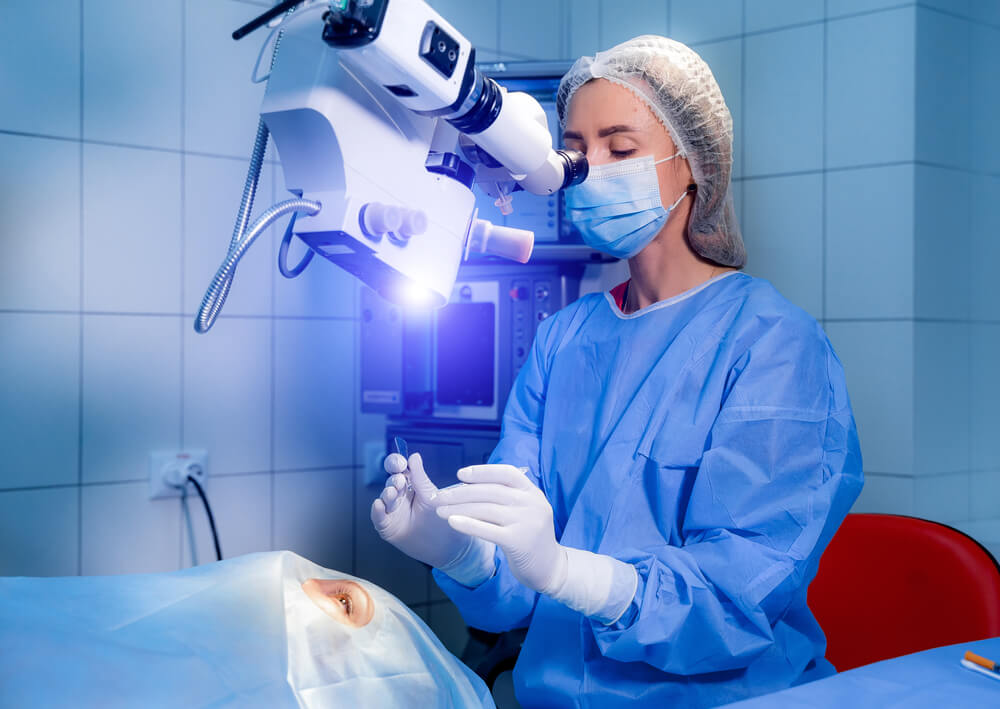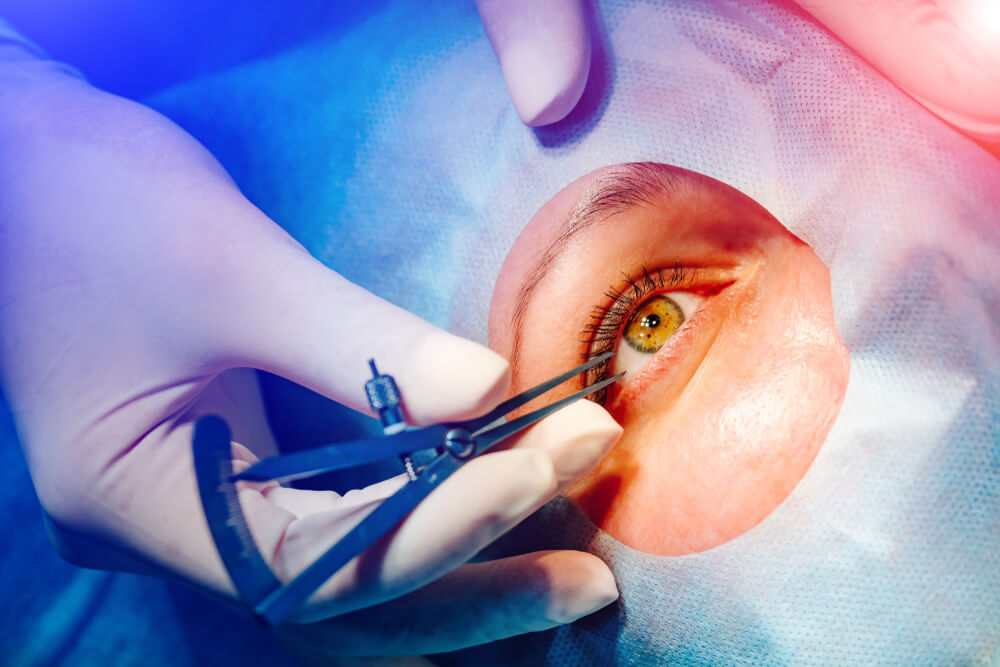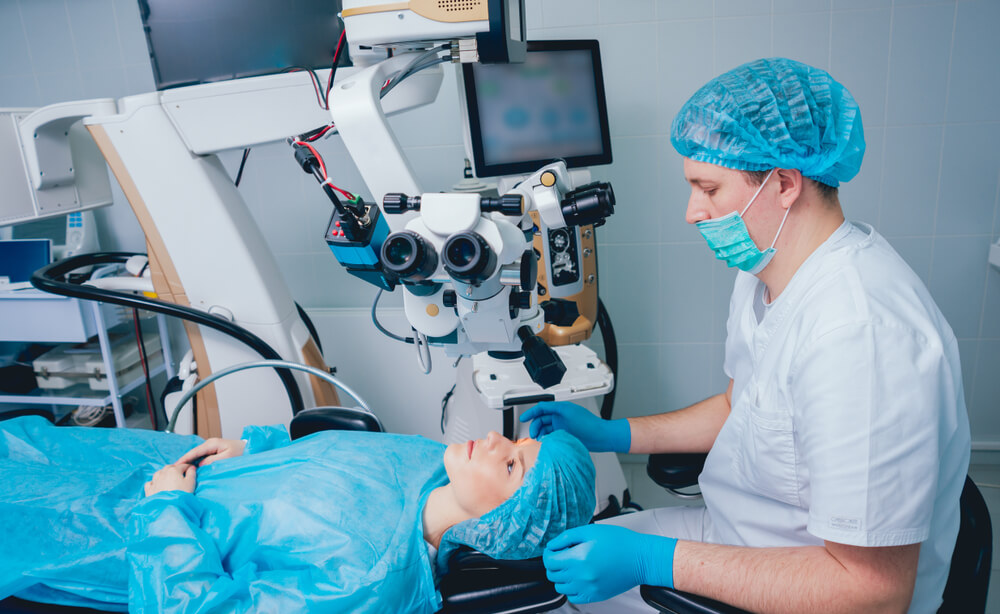What Is the Most Advanced Contoura LASIK?

Eye surgeries have come a long way. The first cataract extraction was actually done in 1747 in Paris. At the time, a 50% success rate in vision correction was an achievement. It wasn’t until 1987 that the first laser surgery happened.
In the over 30 years since the first surgery, we’ve learned a lot about the types of lasers and techniques that can achieve impressive results. Today, the options for LASIK surgery are more than we ever could have dreamed of back then. While the best type of eye surgery for you will be dependent on your eye exam and your surgeon’s recommendations, the variety of surgical options mean excellent vision is but a consultation away.
Why are there so many types of surgeries? This is a good question. The truth is that everyone has different vision problems, and the different procedures focus on correcting different vision problems. With that in mind, let’s break down some of the best procedures around.
What Is PRK Surgery?

The acronym PRK stands for Photo Refractive Keratectomy. Since LASIK is the most commonly known type of laser eye surgery, you may have assumed it was the original. In fact, PRK surgery was the original technique.
Today, most people know and use LASIK. In many cases, that’s what’s medically indicated. However, PRK is still a strong option for some patients, particularly those with thin corneas or an uneven corneal surface. Professional athletes are a good example of people who may suffer eye injuries that result in uneven corneas. In these situations, PRK may be their best solution.
PRK surgery isn’t an option for those who are long-sighted, though, but it is a solution for treating nearsightedness (myopia) and astigmatism.
Are you someone with chronically dry eyes? This is something your eye surgeon may also discuss with you, as it can be an indicator for different surgical options. In this case, PRK is a good choice for those who struggle with dry eyes.
The downside to this surgical option is a bit of a downer, but a short-term one: recovery time. When it comes to the types of eye procedures available today, PhotoRefractive Keratectomy has the longest recovery time. The cells on the outer surface of the cornea have to grow back after surgery. This takes about a week. Then, it takes another six weeks for clear vision to happen.
While the nearly two months of recovery time is a long wait, it is still a solution to a life without glasses or contacts.
What Is SMILE Eye Surgery?
SMILE stands for Small Incision Lenticule Extraction. This long title is a fairly accurate description of this eye procedure. SMILE works specifically in cases of high myopia. It isn’t an option for every patient with vision issues. It is a fairly new technique, blade-free, and a fascinating option.
This eye surgery uses one laser known as the femtosecond laser. Surgeons use this tool to create a disc of tissue inside the cornea. The shape of the tissue is lenticular, and surgeons call it a lenticule. Surgeons perform adjustments to the disc shape and size. Your unique vision issues affect the end disc the surgeon creates. Eye surgeons then remove the disc. This corrects the error in vision.
After the surgeon removes the disc-shaped tissue, the cornea flattens and reshapes. While SMILE eye surgery has a much shorter recovery time than PRK, it is slower than LASIK. Most patients can expect fully corrected vision within two weeks.
What Is LASIK?
You have likely heard of LASIK, even if you only have a rough understanding of what it is. This is the most common type of eye surgery, and it has led to many advancements and improvements in the industry as a whole.
In this procedure, a surgeon uses a laser to cut a small flap in the cornea. The laser is then able to smooth out any uneven irregularities in the cornea affecting vision.
This surgery is popular because it is effective. It is also popular because it is the best option for a wide variety of people. LASIK can correct slight to moderate nearsightedness, farsightedness, and astigmatisms.
This procedure has a short recovery time. Most patients are able to return to normal activities after a few days of recovery. However, you may not see clearly for one to three months.
What Is Contoura LASIK?
Contoura LASIK is the most advanced laser eye surgery available today. This procedure is sometimes called T-CAT or Topography-guided Custom Ablation Treatment. The top eye surgeons around have perfected the techniques they’ve learned with LASIK and decided on the strongest tools for the job. T-CAT is the end result.
What makes this surgery so spectacular is that surgeons use the highest level of precision available because of the tools they use. The health of your vision is heavily impacted by abnormalities on the cornea. This procedure gives surgeons the ability to approach and perfect two of the most important parts of vision correction: wavefront and topography.
The Procedure

First, the computer performs a corneal analysis of your eye. Today’s machine is actually able to collect 22,000 reference points in the cornea and analyze them. This information tells the system what parts of your eye are affecting your vision. With the data collected, it is then passed on to the Wavelight EX500 excimer laser. This is one of the most precise types of lasers available to eye surgeons today. Rich with important data, the surgeon can then use the laser to sculpt the cornea for optimal results for the patient.
In standard LASIK procedures and most other kinds of eye surgeries, the surgery includes a small incision. While this is safe and necessary in those procedures, it doesn’t happen with T-CAT. What does this mean? The cornea more easily retains its natural shape and architecture, which improves the end results. On top of this, fewer patients report the common side effect of dry eyes after their procedure.
Patients with thin corneas or those who suffer from dry eyes are strong candidates for T-CAT.
Another strong benefit of this procedure is a short recovery time. Many patients are able to go about their normal activities immediately following the procedure. This has made eye surgery easier on patients than ever before.
LASIK Surgery in Los Angeles
The end results have spoken for themselves. They have exceeded other LASIK procedures by far. Today, T-CAT is offering patients the highest rates of excellence for LASIK surgery in Los Angeles. Some of the measurements for success include the highest rate of patients who see better after the procedure than they did wearing glasses or contacts before, the highest rate of results better than 20/20, and the most satisfied patients in the end. It’s these kinds of results that have led to us recommending T-CAT to so many of our patients looking for a minimally invasive and strongly effective route to excellent vision.
If you’re ready to discover more about the best type of eye surgery for your needs, request a free consultation on our website today.
